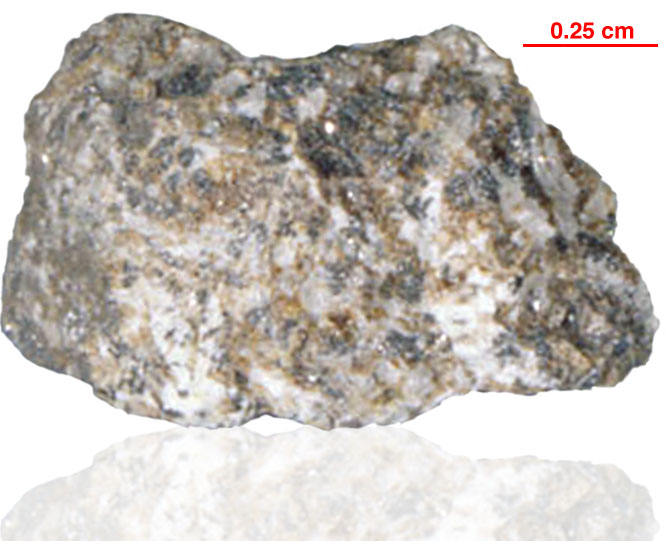
Fact sheet
70147 is a high-Ti, plagioclase-poikilitic basalt that was collected from a basaltic boulder named the "Geophone Rock". It is a medium grey, sub-angular, mare basalt which contains no cavities. Anhedral and blocky ilmenite forms an intersertal texture with plagioclase and pyroxene. Ilmenite contains chromite and rutile exsolution lamellae. Rare discrete chromite-ulvospinel grains are present, usually included in pyroxene. Armalcolite without ilmenite rims is present as inclusions in pyroxene. Metallic iron, minor silica, and troilite form interstitial phases. Plagioclase exhibits moderate core-to-rim variation (An76-90), with the rims being more sodic. Pyroxene compositions range from pigeonite to titan-augite, with both variants zoning to a common, more Fe-rich composition. A melt inclusion is shown in rotation 2.
The sample weighed 1.35 grams before analysis and has not been dated.
Further details of this and other Apollo samples are here: http://curator.jsc.nasa.gov/lunar/
Apollo 17, the final manned landing mission, had two objectives: to obtain samples of ancient rocks from the lunar highlands and to look for evidence of younger volcanic activity on the valley floor.
This small Collection contains material deriving from both periods, including igneous rocks around 4.3 billion years old from the lunar highlands as well as younger volcanic samples dating from about 3.6 billion years ago.
Apollo 17 was launched on 7 December 1972.






